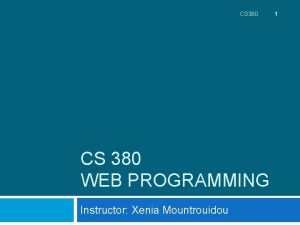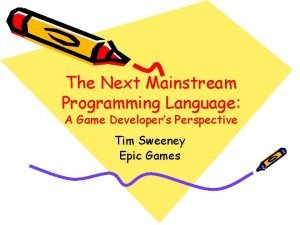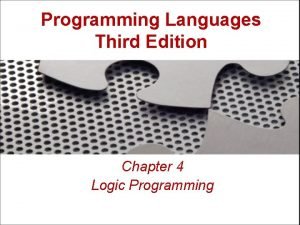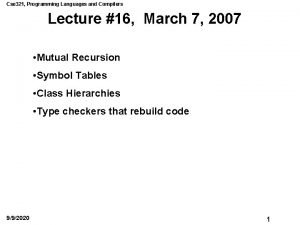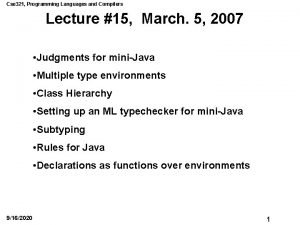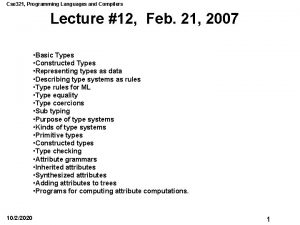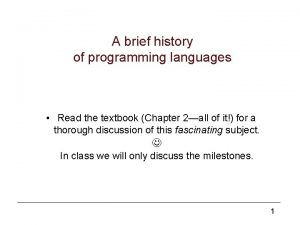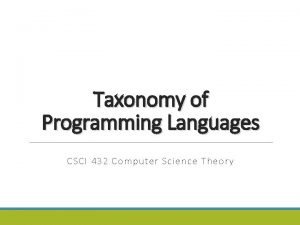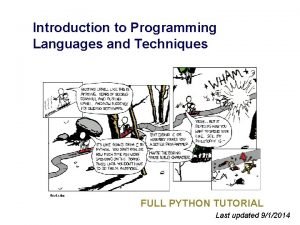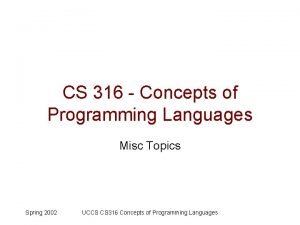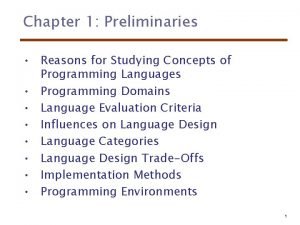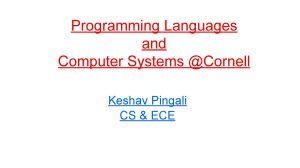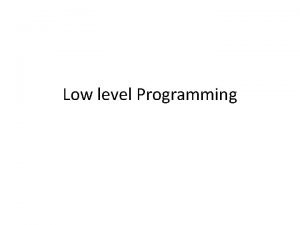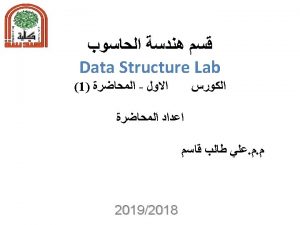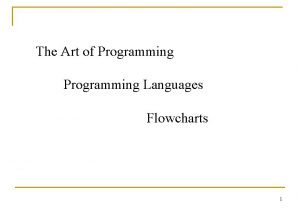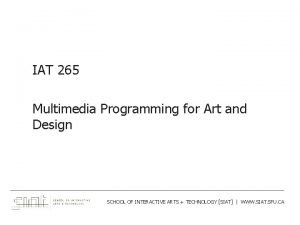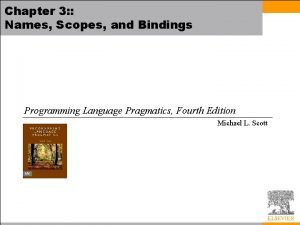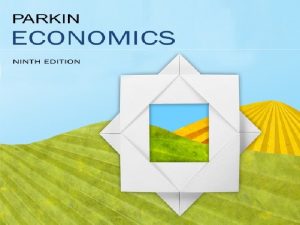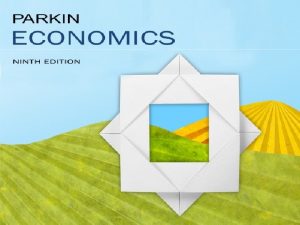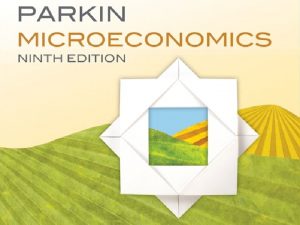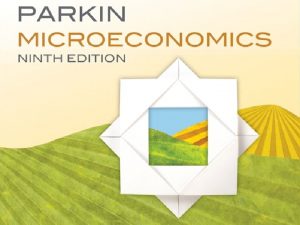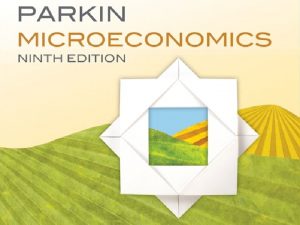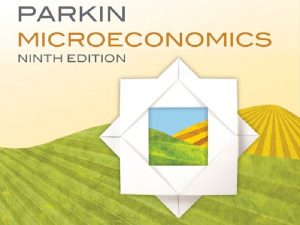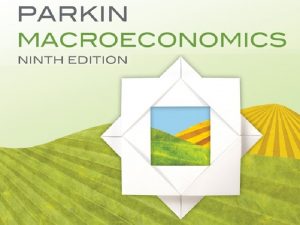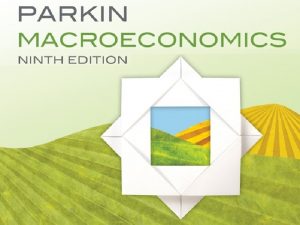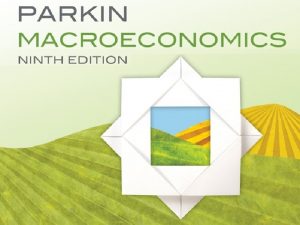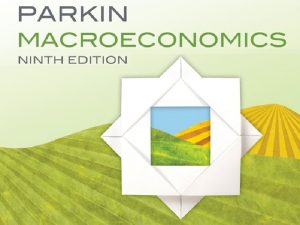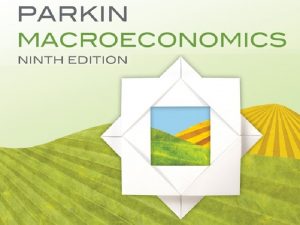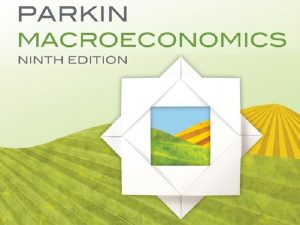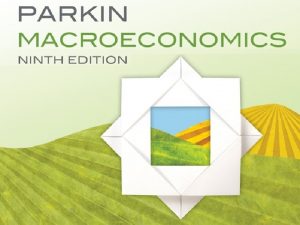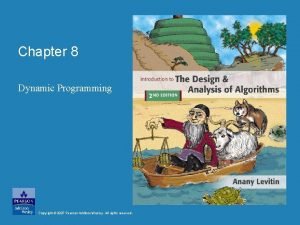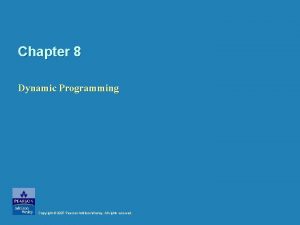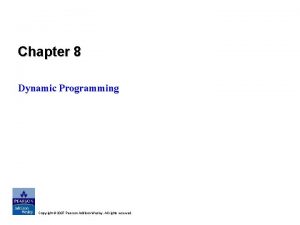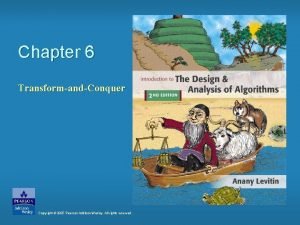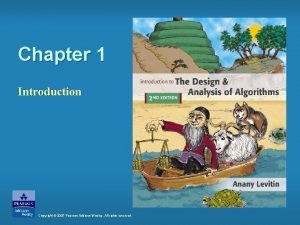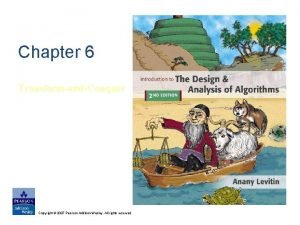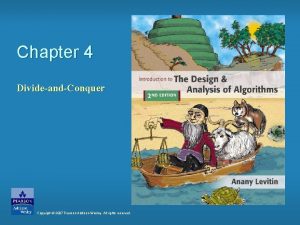Chapter 6 Programming Languages 2007 Pearson AddisonWesley All










































- Slides: 42

Chapter 6 Programming Languages © 2007 Pearson Addison-Wesley. All rights reserved

Chapter 6: Programming Languages • • 6. 1 Historical Perspective 6. 2 Traditional Programming Concepts 6. 3 Procedural Units 6. 4 Language Implementation 6. 5 Object Oriented Programming 6. 6 Programming Concurrent Activities 6. 7 Declarative Programming © 2007 Pearson Addison-Wesley. All rights reserved 2

Figure 6. 1 Generations of programming languages © 2007 Pearson Addison-Wesley. All rights reserved 3

Second-generation: Assembly language • A mnemonic system for representing machine instructions – Mnemonic names for op-codes – Identifiers: Descriptive names for memory locations, chosen by the programmer © 2007 Pearson Addison-Wesley. All rights reserved 4

Assembly Language Characteristics • One-to-one correspondence between machine instructions and assembly instructions – Programmer must think like the machine • Inherently machine-dependent • Converted to machine language by a program called an assembler © 2007 Pearson Addison-Wesley. All rights reserved 5

Program Example Machine language 156 C 166 D 5056 30 CE C 000 © 2007 Pearson Addison-Wesley. All rights reserved Assembly language LD R 5, Price LD R 6, Shipping. Charge ADDI R 0, R 5 R 6 ST R 0, Total. Cost HLT

Third Generation Language • Uses high-level primitives – Similar to our pseudocode in Chapter 5 • Machine independent (mostly) • Examples: FORTRAN, COBOL • Each primitive corresponds to a sequence of machine language instructions • Converted to machine language by a program called a compiler © 2007 Pearson Addison-Wesley. All rights reserved 7

Figure 6. 2 The evolution of programming paradigms © 2007 Pearson Addison-Wesley. All rights reserved 8

Figure 6. 3 A function for checkbook balancing constructed from simpler functions © 2007 Pearson Addison-Wesley. All rights reserved 9

Figure 6. 4 The composition of a typical imperative program or program unit © 2007 Pearson Addison-Wesley. All rights reserved 10

Data Types • • Integer: Whole numbers Real (float): Numbers with fractions Character: Symbols Boolean: True/false © 2007 Pearson Addison-Wesley. All rights reserved 11

Variable Declarations float int char Length, Width; Price, Total, Tax; Symbol; © 2007 Pearson Addison-Wesley. All rights reserved 12

Figure 6. 5 A two-dimensional array with two rows and nine columns © 2007 Pearson Addison-Wesley. All rights reserved 13

Figure 6. 6 The conceptual structure of the heterogeneous array Employee © 2007 Pearson Addison-Wesley. All rights reserved 14

Figure 6. 7 Control structures and their representations in C, C++, C#, and Java © 2007 Pearson Addison-Wesley. All rights reserved 15

Figure 6. 8 The for loop structure and its representation in C++, C#, and Java © 2007 Pearson Addison-Wesley. All rights reserved 16

Procedural Units • • Local versus Global Variables Formal versus Actual Parameters Passing parameters by value versus reference Procedures versus Functions © 2007 Pearson Addison-Wesley. All rights reserved 17

Figure 6. 9 The flow of control involving a procedure © 2007 Pearson Addison-Wesley. All rights reserved 18

Figure 6. 10 The procedure Project. Population written in the programming language C © 2007 Pearson Addison-Wesley. All rights reserved 19

Figure 6. 11 Executing the procedure Demo and passing parameters by value © 2007 Pearson Addison-Wesley. All rights reserved 20

Figure 6. 12 Executing the procedure Demo and passing parameters by reference © 2007 Pearson Addison-Wesley. All rights reserved 21

Figure 6. 13 The function Cylinder. Volume written in the programming language C © 2007 Pearson Addison-Wesley. All rights reserved 22

Figure 6. 14 The translation process © 2007 Pearson Addison-Wesley. All rights reserved 23

Figure 6. 15 A syntax diagram of our if-then-else pseudocode statement © 2007 Pearson Addison-Wesley. All rights reserved 24

Figure 6. 16 Syntax diagrams describing the structure of a simple algebraic expression © 2007 Pearson Addison-Wesley. All rights reserved 25

Figure 6. 17 The parse tree for the string x + y x z based on the syntax diagrams in Figure 6. 17 © 2007 Pearson Addison-Wesley. All rights reserved 26

Figure 6. 18 Two distinct parse trees for the statement if B 1 then if B 2 then S 1 else S 2 © 2007 Pearson Addison-Wesley. All rights reserved 27

Figure 6. 19 An object-oriented approach to the translation process © 2007 Pearson Addison-Wesley. All rights reserved 28

Objects and Classes • Object: Active program unit containing both data and procedures • Class: A template from which objects are constructed An object is called an instance of the class. © 2007 Pearson Addison-Wesley. All rights reserved 29

Figure 6. 20 The structure of a class describing a laser weapon in a computer game © 2007 Pearson Addison-Wesley. All rights reserved 30

Components of an Object • Instance Variable: Variable within an object – Holds information within the object • Method: Procedure within an object – Describes the actions that the object can perform • Constructor: Special method used to initialize a new object when it is first constructed © 2007 Pearson Addison-Wesley. All rights reserved 31

Figure 6. 21 A class with a constructor © 2007 Pearson Addison-Wesley. All rights reserved 32

Object Integrity • Encapsulation: A way of restricting access to the internal components of an object – Private versus public © 2007 Pearson Addison-Wesley. All rights reserved 33

Figure 6. 22 Our Laser. Class definition using encapsulation © 2007 Pearson Addison-Wesley. All rights reserved 34

Additional Object-oriented Concepts • Inheritance: Allows new classes to be defined in terms of previously defined classes • Polymorphism: Allows method calls to be interpreted by the object that receives the call © 2007 Pearson Addison-Wesley. All rights reserved 35

Programming Concurrent Activities • Parallel (or concurrent) processing: simultaneous execution of multiple processes – True concurrent processing requires multiple CPUs – Can be simulated using time-sharing with a single CPU © 2007 Pearson Addison-Wesley. All rights reserved 36

Figure 6. 23 Spawning threads © 2007 Pearson Addison-Wesley. All rights reserved 37

Controlling Access to Data • Mutual Exclusion: A method for ensuring that data can be accessed by only one process at a time • Monitor: A data item augmented with the ability to control access to itself © 2007 Pearson Addison-Wesley. All rights reserved 38

Declarative Programming • Resolution: Combining two or more statements to produce a new statement (that is a logical consequence of the originals). – Example: (P OR Q) AND (R OR Q) resolves to (P OR R) – Resolvent: A new statement deduced by resolution – Clause form: A statement whose elementary components are connected by the Boolean operation OR • Unification: Assigning a value to a variable so that two statements become “compatible. ” © 2007 Pearson Addison-Wesley. All rights reserved 39

Figure 6. 24 Resolving the statements (P OR Q) and (R OR ¬Q) to produce (P OR R) © 2007 Pearson Addison-Wesley. All rights reserved 40

Figure 6. 25 Resolving the statements (P OR Q), (R OR ¬Q), ¬R, and ¬P © 2007 Pearson Addison-Wesley. All rights reserved 41

Prolog • Fact: A Prolog statement establishing a fact – Consists of a single predicate – Form: predicate. Name(arguments). • Example: parent(bill, mary). • Rule: A Prolog statement establishing a general rule – Form: conclusion : - premise. • : - means “if” – Example: wise(X) : - old(X). – Example: faster(X, Z) : - faster(X, Y), © 2007 Pearson Addison-Wesley. All rights reserved faster(Y, Z). 42
 Real-time systems and programming languages
Real-time systems and programming languages Cs 421 uiuc
Cs 421 uiuc Multithreaded programming languages
Multithreaded programming languages Programming languages levels
Programming languages levels Introduction to programming languages
Introduction to programming languages Plc
Plc Joey paquet
Joey paquet Comparative programming languages
Comparative programming languages Alternative programming languages
Alternative programming languages Types of programming languages
Types of programming languages Transmission programming languages
Transmission programming languages Cse 340 principles of programming languages
Cse 340 principles of programming languages Types of programming languages
Types of programming languages Xenia programming languages
Xenia programming languages Advantages and disadvantages of programming languages
Advantages and disadvantages of programming languages Mainstream programming languages
Mainstream programming languages Vineeth kashyap
Vineeth kashyap Programming languages
Programming languages Programming languages
Programming languages Programming languages
Programming languages Programming languages
Programming languages Attribute grammar in principles of programming languages
Attribute grammar in principles of programming languages Brief history of programming languages
Brief history of programming languages Taxonomy of programming languages
Taxonomy of programming languages Real time programming language
Real time programming language Xkcd functional programming
Xkcd functional programming If programming languages were cars
If programming languages were cars Reasons for studying concepts of programming languages
Reasons for studying concepts of programming languages Cornell programming languages
Cornell programming languages Low level programming languages
Low level programming languages Middle level programming languages
Middle level programming languages The art of programming
The art of programming Cs 421 programming languages and compilers
Cs 421 programming languages and compilers Iat 265
Iat 265 Storage management in programming languages
Storage management in programming languages Name a line containing point a
Name a line containing point a Pearson education, inc. publishing as prentice hall
Pearson education, inc. publishing as prentice hall 2011 pearson education inc
2011 pearson education inc Bob whelan pearson
Bob whelan pearson Educational pearson pearson times
Educational pearson pearson times Pearson education inc publishing as pearson prentice hall
Pearson education inc publishing as pearson prentice hall 2012 pearson education inc
2012 pearson education inc Copyright 2008
Copyright 2008













